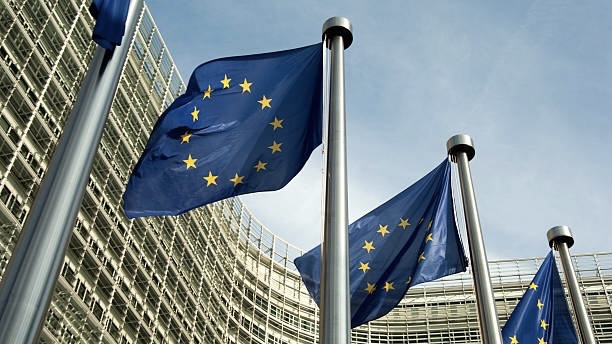Public distrust of government runs rampant across the globe. Recent reports show that less than half of Europeans trust the European Union and their national governments. Unfortunately, public consultation by government officials often falls short of promoting trust. How can consultation be improved to promote trust in the regulatory process?
The Penn Program on Regulation recently hosted a panel that addressed this question. The panelists—Nicoletta Rangone of LUMSA University and Christiane Arndt-Bascle of the Organization for Economic Cooperation and Development (OECD)—emphasized that, to make public consultation meaningful, regulators need to understand regulatory stakeholders as people with particular interests and needs.
Rangone drew from a new article she published which describes how cognitive insights can be used to improve consultation. Specifically, Rangone highlighted that citizen participation can be hindered by psychological obstacles, such as a lack of individual internal motivation to participate and the potential for people to incur an “information overload.”
To take these cognitive tendencies into account, agencies should work to ensure both that stakeholders are aware of the existence of consultation opportunities and that these opportunities are easily accessible. As many public input channels as possible should be used, including social media, press, and public hearings. And agencies must recognize that long or complicated documents can discourage engagement.
Behavioral science should be incorporated to improve behaviors of regulators themselves as well, noted Rangone and Arndt-Bascle. They discussed, for example, the likelihood that rule makers themselves are prone to confirmation bias. That is, even before rules go out for public consultation, regulators typically have an idea of what types of problems may arise and what their preferred solutions are. A meaningful public consultation, however, would ideally have open-minded regulators who would be willing to see a given problem in different ways.
Rangone emphasized that, even though in theory it may be appealing to have an independent third-party running a public consultation process, this may not always work well because it is important to have individuals with substantive knowledge on the particular regulation running the consultation.
One solution to rule makers’ biases would be to implement a two-stage consultation process, noted Rangone. Citizens may want to be involved earlier on because rule makers may be more amenable to comments at the onset. On the other hand, Rangone suggested that early-stage consultation can introduce citizens to “consultation fatigue” and choice overload. Either way, it is important to have a later stage consultation once there is a draft of the rule.
That said, although it would be ideal to have some form of consultation with affected stakeholders at every stage of the rule making process, it might not feasible to have two stages for every regulation, noted Arndt-Bascle. She urged regulators to think critically when evaluating which rules are worthy of incorporating two stages for eliciting public input.
Artificial intelligence (AI) is yet another emerging development that might help improve the consultation process. Rangone and Arndt-Bascle highlighted how AI can support rule makers by helping them analyze and re-organize comments received, as well as identify stakeholder clusters. This could save time, avoid human error, and help regulators deal with information overload.
In a recent essay in The Regulatory Review, for example, scholar Fabiana Di Porto similarly put forth that consultations can be analyzed with AI tools such as natural language processing, which allows computers to recognize and analyze speech and then identify interest groups accordingly.
“Cognitive insights and AI are certainly not magic formulas to improve consultation, however, and they should be considered the most advanced frontiers for better regulation,” explained Rangone.
In addition, Arndt-Bascle also noted the importance of setting the right expectations for the purpose of consultation. Consultation, she explained, is not the same as direct democracy. It is not a way of making people vote, but rather a means of finding information, getting ideas for alternative measures, and ensuring that those affected by a regulation have an opportunity to have their voices heard. Arndt-Bascle explained that, to reduce confusion, regulators should be clear at the onset what the role of consultation is to ensure that citizens understand government processes and perceive them as fair.
When considering the various factors that go into a successful consultation, an essential question remains. What are the proper metrics for evaluating if consultation is working well?
Although there has been an extensive evaluation of the European Commission’s consultation system, Arndt-Bascle discussed how too few countries seem willing to put in effort to determine if consultation is working, noting how few EU countries have published an evaluation of their consultation systems.
A recent OECD report found it is often unclear to stakeholders how their comments have shaped proposals. “Regulators do not have to change proposals based on what comes out of the consultation,” argued Arndt-Bascle, “but if they never do, that’s an indication that consultation processes are only performative.”
Both Arndt-Bascle and Rangone also noted that appropriate success metrics may focus on the quality, as opposed to quantity, of comments received from the public.
Rangone ended the conversation by underscoring the ways in which effective public consultation is a key factor in regulatory excellence, both within the EU and beyond. Both public administrators and researchers can work together to improve the quality of regulation as well as to think more deeply and creatively about public consultation, according to Rangone.
The panel discussion featuring Rangone and Arndt-Bascle had been moderated by the University of Pennsylvania’s Cary Coglianese, the Edward B. Shils Professor of Law and Director of the Penn Program on Regulation.



